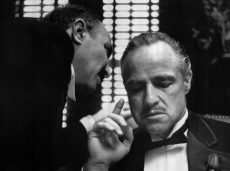
One of the areas of criminology that many are most interested in is Organised Crime. Perhaps this is due to the influence of the media, with films and television shows often based around the topic. Because of this however, many people have stereotypes and prior beliefs about what organised crime is like, and often these are incorrect. Only with actual real-world research can we make claims about the nature of organised crime.
Organised crime is defined as any serious crime taking place over a long period of time, involving a collaboration of more than two people and with the central aim being the pursuit of power or profit. Some argue for the importance of a business-like structure in defining organised crime, as a hierarchical structure is often found, but it may not be in all organised crime cases. Organised crime may use violence or the threat of violence, bribery and corruption, sophisticated technology and transnational links in order to achieve economic gain. There are various types of crime that these characteristics can be linked to, such as drugs trafficking, illegal waste dumping, counterfeiting or fraud and many other potential crimes, so it is a broad over-arching term, as opposed to being related to one crime in particular.
Lunde suggests that organised crime first began pre-19th century, with piracy and banditry as key examples. Therefore the history of this tradition is a long one, and one that has changed quite a lot over time with modern developments. He also argues that some early conquerors throughout history shared similar characteristics to organised criminals, using violence and intimidation to achieve their means and ignoring standard social conduct. In the 1800s, the Mafia first emerged in Southern Italy. They offered to protect landowners and peasants in exchange for their own profits. During the prohibition of alcohol in America, they then started ‘bootlegging’ (illegally smuggling alcohol) into the country, which was very profitable since there was such a high demand. Some in fact believe that it is this western desire to consume that is the primary driver of organised crime, since if we did not want what organised criminals had to offer, then they would not gain anything from committing their crimes.
Various criminologists have tried to apply their own theoretical frameworks to examining how organised crime develops. Goldson suggests that social disorganisation may have an impact, since often in areas where there is high social disorganisation, people do not trust the proper authorities and so may turn to a mob for leadership. This gives people living in the area a sense of community and they feel protected by the mob, who help them to resolve conflicts in the area. Strain theory and anomie may also be relatable. Perhaps those who take part in organised crime cannot achieve the goals of wealth and power that society sets out for them, and so find a new way of achieving these goals. Also within the neighbourhood, there may be an element of normlessness, whereby nobody is really sure what is acceptable. Individuals may then decide to choose the stability of working in organised crime. Furthermore, since people living in these areas may be labelled with criminality anyway, and so cannot achieve the normal goals of society, they may decide to form their own criminal subcultures in the form of organised crime circles, as these will achieve another form of success (in the criminal world).
These theories seem to be quite good at explaining the problem, but the real issue for us is how to deal with it. Perhaps these theories will be beneficial in understanding how to prevent organised crime, and in my opinion, the best solution is to reduce social disorganisation, which may then take away the cause of people turning to organised crime in the first place, but it seems like this area of crime could become more of a problem in future years, with greater international connections and technology which can be used by criminals, and we have to be prepared for this.
Image from: http://d2jkk5z9de9jwi.cloudfront.net/content/uploads/2012/12/Godfather.jpg

0 Comment:
Be the first one to comment on this article.